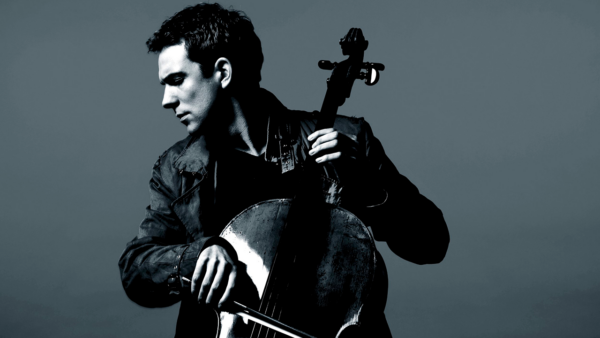Fireworks
Oct. 23, 2023
When you hear “Musical Fireworks” what works come to mind? You might think of works like Tchaikovsky’s 1812 Overture, “Mars” from Gustav Holst’s The Planets or even Stravinsky’s The Firebird. On the next Phoenix Symphony radio broadcast, Monday night at 7:00 p.m. on KNAU Arizona Public Radio, 89.5 Classical KBACH and DTV 8.5 Classical Arizona PBS, we’ll explore some expected and unexpected classical fireworks on a program recorded live at Madison Center for the Performing Arts on February 4, 2023.
On the Program…
If the Italians are responsible for adding color to fireworks, our concert opens figuratively in Renaissance Venice in Saint Mark’s Basilica and the Canzon per Sonare No. 2, or the Song for Playing by composer and organist Giovanni Gabrieli. It was designed to take advantage of the Basilica’s numerous balconies and areas from which musicians could inconspicuously perform, giving the work a technicolor “surround sound” quality.
Interestingly, Gabrieli wrote this work for four instruments, not specifying which instruments he had in mind. The performance we’ll hear is for brass ensemble by David Marlatt. It features a brass choir of two trumpets, horn, trombone, and tuba with each line doubled by multiple instruments. For this performance, the brass players of The Phoenix Symphony were positioned around Madison Center for the Arts to emulate how this might have sounded in St. Mark’s Basilica in Venice.
Venezuelan-born guest conductor Carlos Izcaray is in charge of detonating the musical explosives on the sixth concert in this ten-concert series of The Phoenix Symphony. The program was curated by Virginia G. Piper Music Director Tito Muñoz specifically for Izcaray, who is the Music Director of the Alabama Symphony Orchestra and the American Youth Symphony. He has been widely praised for his contributions to the development of both organizations and for his leadership of both throughout the pandemic.
If your musical theme is Fireworks, you certainly have to have George Friderich Handel’s Music for the Royal Fireworks, right? The work is one of the favorites of the Baroque era, but it’s backstory is just as explosive as real fireworks!
When we think of Handel’s orchestral music, we might immediately think of sparkling strings adding dignity to brass fanfares or dashing along in some long melisma. Well, King George didn’t want any fiddles and only martial instruments like woodwinds and percussion. If this dampened Handel’s artistic intentions, audience members paid no mind. When an open rehearsal was scheduled for the Royal Fireworks, over 12,000 people attended. The overwhelming demand to get to the rehearsal venue caused carriage traffic in London that was gridlocked for three hours!
The rain at the premiere performance may have dampened things, but tragedy struck when part of the structure, specially built for the musicians to perform in, caught on fire, stray rockets and fireworks caught a woman’s clothes on fire, burned two soldiers, blinded another, and more!
What about the music? Well, with all of the extra drama at the premiere it was hardly noticed. However, Handel would re-orchestrate the work for full orchestra, reinstitute his string section, and that is the version we’ve come to love.
On the second part of the program, American-born composer Gabriela Lena Frank takes us on a walkabout. She frequently turns to her multicultural heritage for inspiration when composing. Her mother was of Peruvian/Chinese ancestry while her father was of Lithuanian/Jewish descent. Her 2001 work Leyendas: An Andean Walkabout combines elements from western classical and Andean folk traditions. Frank has always placed identity at the center of her music. It draws inspiration from the idea of mestizaje where cultures can coexist without the enslavement of one by the other. The orchestration is colorful and includes the panpipe, a wooden duct flute, the high-pitched cousin of the guitar called the charango, the lightweight bamboo quena flute, and more.
Frank currently serves as composer-in-residence with The Philadelphia Orchestra under the baton of Yannick Nézet-Séguin and included in the Washington Post’s list of the 35 most significant women composers in history (August 2017).
The final work on the official concert is Sergei Prokofiev’s Symphony No. 1 in D major. Prokofiev’s teacher, Nikolai Tcherepnin, encouraged his students to study the works of the First Viennese School – Mozart, Haydn, and Beethoven among other composers. Prokofiev wrote the First Symphony as a modern reinterpretation of the classical style, paying homage to Franz Joseph Haydn and Wolfgang Amadeus Mozart. He also wrote the work without the aid of a piano. He said, “It seemed to me that composing with or without a piano was purely a matter of habit, and it would be good to gain more experience with a work as uncomplicated as this symphony.”
To fill out the program, we turn to our archives and library to bring you those works which may come to mind as musical fireworks: the dynamic The Firebird Suite (1919) by Igor Stravinsky, “Mars” from Gustav Holst’s The Planets, or Tchaikovsky’s always-stirring 1812 Overture.
Don’t forget to tune in for these musical fireworks Monday at 7:00 p.m. on KNAU Arizona Public Radio, 89-5 Classical KBACH and DTV 8.5























